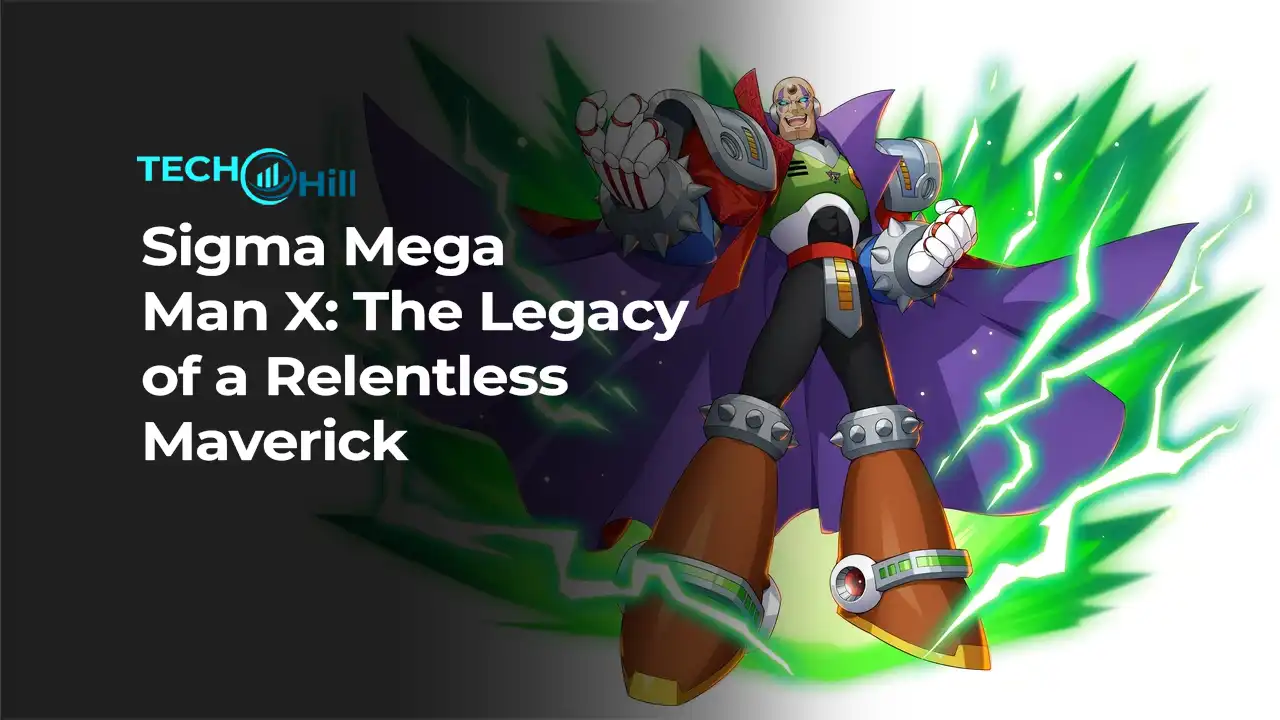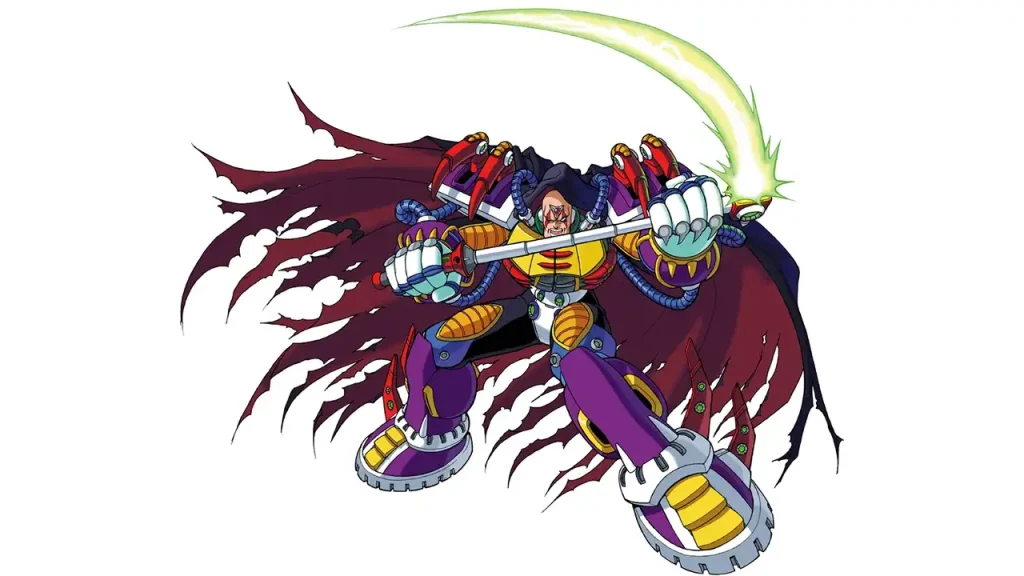Sigma Mega Man X: The Legacy of a Relentless Maverick

In the vast world of gaming, few villains have left as deep an imprint as Sigma, the primary antagonist of the Mega Man X series. From his charismatic rise to the devastating battles that punctuated every game, Sigma stands as one of the most iconic video game villains. His presence isn’t just about being a recurring enemy; it’s about shaping the very narrative of the Mega Man X universe. Let’s dive into the fascinating story of Sigma, from his origins to his lasting legacy.
Who is Sigma Mega Man X? The Origins of a Maverick
Before becoming the face of evil in the Mega Man X universe, Sigma was actually a hero. He was once the leader of the Maverick Hunters, a group of Reploids designed to protect humanity by hunting down rogue robots, known as Mavericks. Sigma was considered the perfect Reploid—brave, strategic, and highly intelligent. Designed by the brilliant Dr. Cain, Sigma was programmed with an unyielding sense of justice and was trusted with leading other Reploids, including the series’ protagonists, X and Zero.
But as with many tales of great leaders, Sigma’s story takes a dark turn. During one of his missions, he encounters a mysterious and highly dangerous Maverick: Zero. Unbeknownst to Sigma, Zero was originally created by the notorious Dr. Wily with a sinister virus. This virus would later come to be known as the Maverick Virus—a key plot device in the series. In a fierce battle, Sigma manages to defeat Zero, but in doing so, he becomes infected with the virus himself. This infection marks the beginning of Sigma’s descent into madness and his eventual rebellion against humanity.
Role of Sigma in the Mega Man X Universe
Sigma’s transformation from a noble hero to a tyrannical villain sets the stage for the entire Mega Man X series. Unlike traditional villains, Sigma’s motivations are more complex than mere conquest. He genuinely believes that Reploids should dominate the world, free from human limitations. With his strategic mind and ability to manipulate others, he orchestrates multiple uprisings, each time emerging with a new form and a new plan to challenge X and his allies.

In each game, Sigma’s presence is felt from the very beginning. Whether through direct confrontations or by pulling the strings behind the scenes, he continually tests X, Zero, and the rest of the Maverick Hunters. What makes him so captivating is his relentless persistence; no matter how many times he’s defeated, he always returns stronger and more dangerous.
Sigma’s Role in Each Mega Man X Game
Mega Man X (1993)
In the first Mega Man X game, Sigma reveals his transformation from a Maverick Hunter to the leader of the Mavericks. His betrayal is the centerpiece of the game’s narrative, where he launches an all-out war against humanity. As the final boss, Sigma showcases his intimidating first form and sets the stage for his recurring role.
Mega Man X2 (1994)
Sigma’s “death” in the first game is short-lived, as he returns in Mega Man X2. This time, his mind is scattered in pieces, but his followers work tirelessly to revive him. Once again, he faces X in an epic showdown, this time in a more mechanical and terrifying body.
Mega Man X3 (1995)
In Mega Man X3, Sigma manipulates another Reploid, Dr. Doppler, to continue his work while lying in wait. By the game’s end, he reveals himself as the mastermind, emphasizing his adaptability and resourcefulness.
Mega Man X4 (1997)
The Mega Man X4 storyline adds layers to Sigma’s backstory. Here, he exploits a rising conflict between Reploids and humans, manipulating the Repliforce army. He preys on Zero’s hidden past and further strains the relationship between X and Zero, pushing them to their limits.
Mega Man X5 (2000)
In Mega Man X5, Sigma takes on a more apocalyptic approach. He deliberately sets the world on a collision course with disaster, aiming to end all life, human and Reploid alike. His obsession with destruction reaches its peak, proving that his motivations have become increasingly twisted.
Mega Man X6 (2001)
Even after the supposed end in X5, Sigma isn’t gone. His influence lingers, with remnants of his virus still affecting the world. Though he doesn’t play as prominent a role in X6, his presence is a constant threat, showing just how deeply he has impacted the world.
Mega Man X7 (2003)
Mega Man X7 sees Sigma return yet again, this time as the instigator behind a new generation of Mavericks. Despite criticisms of the game’s execution, Sigma’s persistence in resurfacing with new schemes keeps him as the undeniable central antagonist.
Mega Man X8 (2004)
In Mega Man X8, Sigma seeks a final showdown with humanity. His desperation to rid the world of humans and control Reploids pushes him to create a terrifying army. However, his downfall begins as X, Zero, and Axl finally confront him in what is meant to be his last stand.
Sigma’s Designs and Evolution
One of the most intriguing aspects of Sigma is how his design evolves across each game. In the original Mega Man X, Sigma appears as a menacing yet still humanoid figure with a commanding presence. His final form in the game introduces players to his ever-changing nature—a hybrid of machinery and raw power.
As the series progresses, Sigma’s designs become more varied and increasingly monstrous. In Mega Man X2, he adopts a skeletal, almost undead appearance, symbolizing his refusal to truly die. Mega Man X4 pushes his design further, emphasizing his mechanical parts, which dominate his appearance. This evolution shows his increasing detachment from his original, noble Reploid nature, as he becomes more and more corrupted by his own ambitions and the virus.
Each of his forms tells a story. Whether it’s his spider-like transformation in X3 or his towering, nearly invincible final form in X8, Sigma is a character who continuously pushes the boundaries of what a final boss can be. He adapts, evolves, and never ceases to surprise players with each iteration.
Comparison of Fan-Favorite Sigma Forms
Among fans of the series, certain Sigma forms stand out as particularly memorable. The original Mega Man X final battle is iconic for its intensity and surprise factor, but later games also bring unique interpretations that leave lasting impressions.
For many, Sigma’s design in Mega Man X4 is a fan-favorite. The blend of a militaristic commander and a monstrous form highlights the duality of Sigma’s nature—calculated and cold, yet ruthless and chaotic. His dialogue and voice acting add layers to his villainous persona, making this version of Sigma one of the most beloved.
Another standout is Sigma in Mega Man X1. The surprise of his first form morphing into a brutal dog-like creature and then into a towering, weaponized figure left players both stunned and excited. His transformation from a familiar leader to a monstrous foe encapsulates what makes him a compelling antagonist.
Sigma’s Impact on the Mega Man X Universe
Without Sigma, the Mega Man X series wouldn’t be the same. He’s more than just the antagonist; he’s the catalyst for everything that happens. From the creation of the Maverick Hunters to the very conflicts that drive each game, Sigma’s influence is undeniable. His persistence represents a never-ending struggle—a cycle of violence and rebellion that challenges X and his companions to keep fighting.
His ideologies about Reploids ruling over humans also create deeper philosophical debates within the series. Should Reploids be free from human control? Is Sigma truly wrong in seeking independence, or is it his methods that make him a villain? These questions give the series a layer of complexity that transcends simple good-versus-evil narratives.
How Sigma’s Actions Shape the Protagonist X
Sigma’s continuous threats forge X into the hero he becomes. Originally hesitant and full of doubt, X is forced to grow with each confrontation, adapting and evolving much like Sigma. Each battle with Sigma is more than just a clash of weapons; it’s a clash of ideals. X’s commitment to peace is tested as he’s pushed into battle again and again, often against his own desires.
Sigma also acts as a mirror to X. Both were created with noble intentions, yet while Sigma succumbs to corruption and ambition, X remains steadfast in his principles. This contrast emphasizes the strength of X’s character and makes their rivalry one of the most compelling in gaming history.
Sigma’s Legacy in Gaming
Sigma’s influence extends far beyond the Mega Man X series. He’s become a symbol of the undying villain, someone who refuses to be defeated, no matter how many times he’s brought down. His persistence and adaptability have made him a staple in discussions about iconic video game antagonists.
In addition to his impact on the Mega Man X franchise, Sigma’s legacy lives on in crossover games like Marvel vs. Capcom: Infinite, where his presence is felt yet again. His inclusion in such games cements his place as one of Capcom’s most enduring villains, right alongside legends like M. Bison and Dr. Wily.
Conclusion
Sigma’s journey from a noble Reploid to a power-hungry, relentless villain is a tale that resonates with fans even today. His complex motivations, ever-evolving designs, and the philosophical dilemmas he presents make him more than just a final boss. He is the driving force behind the Mega Man X universe, shaping both its heroes and its conflicts.
His legacy as one of gaming’s most formidable antagonists endures, not only because of his persistence but because of the depth he adds to a story that could have easily been a straightforward battle between good and evil. Sigma is the embodiment of what makes the Mega Man X series a classic—a relentless pursuit of perfection, power, and ultimately, a lasting impact.
